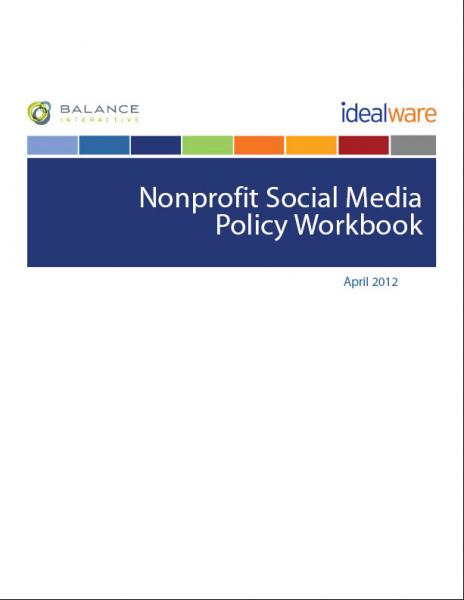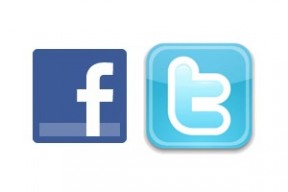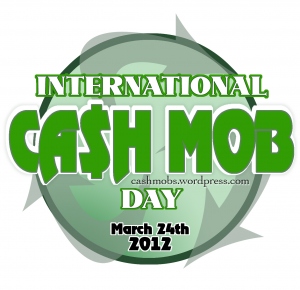Arts managers in the 21st century must go further than producing work that engages their audience. They must carefully strategize and monitor the platforms through which their audience is engaging. The San Francisco Opera’s "Tweet Seats" program is a prime of example of an arts organization not only encouraging discussion, but successfully managing the discussion around their work.
#TBT: The Arts Manager's Toolkit for Data Management
Here at AMT Lab, we have been sorting through plenty of data as we prepare for tomorrow’s release of the full report from our 2015 National Ticketing Survey (stay tuned!). Today’s throwback is a collection of AMT Lab Articles that discuss tools, stories and best practices for the management and usage of quantitative data in an arts organization. Most of these are a more recent throwback, but even those articles from 2012 still provide invaluable resources for organizational leaders.
Tweet Seat Roundup
Love them or hate them, more and more arts organizations are experimenting with tweet seats. For the uninitiated, tweet seats are a designated section of the audience where traditional etiquette rules are bent. Use of devices in this special section is not only allowed, it is encouraged. This roundup features several AMT Lab articles on tweet seats, exploring how organization have managed both their challenges and opportunities.
Research Update #3: Best Practices of Twitter
According to statistics from Digitalbuzz, there are over 288 million monthly active users on Twitter, 60% of which access the social network from mobile.
Contributor Aoni Wang investigates some best practices for this growing platform by continuing her examination of the Met, Warhol, and Tate's social media strategies. Click here to read the full article.
Interweaving Social: Managing and implementing social media in artistic programming
In 2012, Dog & Pony DC, a small theatre company in Washington D.C., encouraged audiences to direct the plot of a show and influence characters using Twitter. In A Killing Game, audiences and actors stood side-by-side, immersing themselves in a collaborative artistic experience. In order to learn more about the company’s decision to utilize social media, and its approach to integrating the technology and management of its uses, AMT Lab’s Kristen Sorek West spoke to company director, Rachel Grossman.
Growing Social: How to Make the Most of Your Organization's Social Media Efforts
As many arts marketers, social media gurus, and nonprofit professionals attest, the question for nonprofit arts organizations is no longer whether or not to use social media but rather how to use it most effectively. This shift is reflected by AMT Lab readers’ responses to our 2014 AMT Lab Reader Poll, where a whopping 76% of respondents indicated they would like to see additional research on social media analytics while only 31% indicated interest in research on social media platforms themselves.
To Tweet Seat or Not To Tweet Seat: An Insider's Perspective
The year has come full circle for me and tweet seats. From my first conversation about them last summer at the Theatre Communications Group Annual Conference to the CMU School of Music’s tweet seat initiative this past spring, the last twelve months provided an opportunity to play with this still new (and at times, controversial) audience engagement tool.
Frustrated by Managing Multiple Social Media Channels? Buffer It!
CMU School of Music Tries Tweet Seats
On January 26, 2014, Carnegie Mellon University’s School of Music offered a little something extra to its audience both in Pittsburgh and afar: tweet seats. Last summer I wrote an article about tweet seats that provides an overview of decisions that need to be made before implementing this heavily debated audience engagement technique. With this advice in mind, the School of Music set out to define how and why tweet seats might be a good idea for live concerts.
To Tweet Seat or not to Tweet Seat: A Perspective
To tweet seat or not to tweet seat; that’s the question on everyone’s mind. After a rather engaging conversation at the Theatre Communications Group Annual conference in Dallas, I went home thinking about the pros and cons of new technology and how it can be used to engage today’s audience. If our audiences are evolving, why are we still connecting with them in the same manner as the previous generation of administrators?
We Have 10,000 Followers! ...Now What?
I don't know if you know but Technology in the Arts has a Twitter account - it's true! And @TechInTheArts has reached its goal of 10,000 Twitter followers! Huzzah! Break out the champagne! We're going to dance all night, such an achievement has never been reached by mankind before!* Unless, of course, 10,000 is an arbitrary number that just seems important. Sure, it's a milestone, but what does that really mean for an organization? What does that mean for Technology in the Arts?
HintMe: a Shared Mobile Museum Platform on Twitter
FIRST: I want to direct you to this website where you can read an interview about HintMe with Merete Sanderhoff, a researcher at the National Gallery of Denmark, and a case study about the Danish museums using Twitter. But for the fast facts…
Who: The National Gallery of Denmark (Statens Museum for Kunst) and 11 additional Danish art museums.
What: HintMe is a shared mobile platform with the aim of opening up museums' collections by making content re-useable and freely sharable. At the same time, the platform has the potential to increase user engagement with the museum, its artwork, and between visitors themselves. Here is why it is brilliant: HintMe makes use of an existing platform, Twitter, and a style of communication that has become increasingly familiar and popular, the hashtag. #sohotrightnow
Make It Look Good: The Value of Visual
Tweet Seats at the University Musical Society
There's been a lot of chatter lately about Tweet Seats. The NEA hosted a series of blog posts about #2TweetOrNot2Tweet, we brought up possible legal issues last week, and before I leave you all for the weekend, I'd like to point you towards a great post from ArtsFwd. If you, or anyone you know, is considering Tweet Seats, you should really read this post.
The Peril of Tweet Seats
Stop me if you’ve heard this one – your local symphony has an upcoming production, and in order to draw in a younger crowd offer Tweet Seat tickets. The young kids come, spend the performance merrily on their phones, and head home. The next week, the symphony is slapped with a cease and desist – wait, what? I’ll start at the beginning. Tweet Seats are a new engagement tactic for performing arts organizations, utilizing social media and modern technology. The idea is that some seats in your house are reserved for people who wish to utilize their phone during the show. These patrons use Twitter or other social media to discuss and engage the performance at hand. Usually these seats are less expensive and in the back of the house, so as to not disturb the other patrons.
Some people (read: me) love the idea – others hate it, and the most thoughtful question its ability to truly increase engagement. Regardless, Tweet Seats are here to stay. Huffpo has written on them, Wolf Trap has used them, and now some troll claims to have successfully patented them.
The story dropped back in March, but it’s still very relevant to anyone considering using Tweet Seats in an upcoming production. Inselberg Interactive is the company holding the patent, whose language refers specifically to sporting events, but they have already demanded license fees from a nonprofit theatre in Connecticut. Ars Technica has the full story and analysis, but it basically boils down to this:
The company holding the patent doesn’t claim to have invented the smart phone technology or the social media apps Tweet Seats utilize. They claim to have invented the process of, I don’t know, tweeting at live events. Still with me? Good.
Patents, according to the US Patent and Trademark Office protect inventions and improvements to existing inventions. They also, according to my one semester of law class, must be novel and non-obvious. This patent was issued in 2005: Twitter didn’t exist and baby Facebook was just starting to let high school students in. At that time, this probably was a novel idea – but it was just an idea. Patents don’t usually apply well to ideas, they need a more tangible form.
Patents can be challenged and litigated against, but that costs time and legal fees. Given that this troll has turned their focus to the non-profit world, it’s unclear if those are available resources.
And when you consider that patents have a minimum shelf life of 14 years, I don’t think it’ll be going away unless someone smacks them down in court.
Did Black Friday Shopping Kill Social Media Advertising?
“Marketers looking to get more the most bang for their buck with […] advertising might skip social media altogether” – Lauren Gores (Mashable)
The words stopped my social media manager heart cold – Facebook barely contributed anything to Black Friday sales and I can already hear the complaints now: Black Friday is the biggest shopping day of the year. Everyone goes shopping on Black Friday. Everyone advertises on Facebook. If Everyone didn’t use Facebook to make purchasing decisions on Black Friday THEY NEVER WILL and we might as well give up now.
I could hear hypothetical red buttons being pushed as non-profits all over the country shut down their social media outreach. I was panicking. But were my fears entirely founded? Could non-profit organizations have a profit-driven relationship with social media, or is it strictly for community engagement?
This matter is irrelevant if non-profits are not using social media. Fortunately, the 2012 Nonprofit Social Network Benchmark Report indicates that nonprofits are extremely present on social media. Ninety-eight percent of the nonprofits surveyed reported they had a presence on Facebook, and 72% maintained a presence on Twitter. This is especially impressive when you consider only 66% of American adults online use Facebook (Brenner) and only 15% of online adults utilize Twitter (Smith). Additionally, nonprofits manage an average of 2.9 pages on Facebook and 1.43 accounts on Twitter (“2012 Nonprofit Social Network Benchmark Report”).
Why are these organizations so aggressively creating spaces for themselves in these realms? The organizations themselves identified marketing and fundraising as the top two purposes for maintaining a social media presence (“2012 Nonprofit Social Network Benchmark Report”). These purposes are separate and not equal, however, as 93% identified marketing as a purpose while only 55% identified fundraising. Most reported that the responsibility for their social media pages fell to the Marketing department in 2012. This was a departure from every previous year, when the task fell to Communications. It is pretty clear that nonprofits feel their social media presences are vital marketing tools in a digital age.
Of course, I should return to the original question – should we panic at the concept of using social media to hawk one’s wares because mega retailers couldn’t hack it on Black Friday? Maybe. IBM reported that Facebook generated only 0.68% of online sales on Black Friday – less than last year’s Black Friday and actually much less than the sales generated on the Friday the week before (a whooping 0.82%) (“IBM 2012 Holiday Benchmark Reports”). Twitter contributed a grand total of 0% of the revenue – that’s not rounding down. That’s just a 0. Additionally, the IBM report also notes that the conversion rate of shoppers was only 4.58%, meaning that less than 5% of Americans who visited a webpage actually purchased anything on Black Friday.
Before anyone actually gives up hope for internet commerce, let’s consider these mysterious Black Friday shoppers. Marketers would have you believe it is Everyone who shops on Black Friday, as a matter of American tradition. This falls a bit short of the truth. A Gallup poll conducted before the actual day shows that only 18% of respondents planned to do any shopping on Black Friday (Newport). The majority of these respondents, 95%, listed the good sales/cheap prices as an “important reason” for their decision to shop on Black Friday. This is consistent with such a low conversion rate – potential shoppers visited webpages to search for deals and if they could not find them, simply left. So the idea of social media advertising being a failure is less true than it first appears: only a small percentage of Americans shop on Black Friday, most who visit a webpage do not purchase anything, so social media could not play a huge role in these sales because there was no huge role for it to fill. Additionally, as a Mashable article on the story pointed out, social ads “are a part of a larger strategy” that move people off their computer and into stores (Mashable).
Which brings me back to the question of whether or not social media should be used to sell things. The non-profits arts community has been considering this question recently as well. The past National Arts Marketing Project Conference (NAMPC) featured a panel on the subject. “Meet Your Customers Where They Live: How to Harness the Sales Power of Facebook” generated a lot of buzz on Twitter as attendees livetweeted the core messages of the panel. Twitter user Katy Peace (@katymatic) suggested the panel “has finally made a compelling case for this FB ticketing app.” Nella Vera (@spinstripes) quoted panelist Lisa Middleton in her tweet, “Lisa Middleton: FB sales for arts will succeed for same reason it failed for other retailers. Buying tix to cultural event is SOCIAL. #NAMPC”. Reinforcing the social element, Facebook profile pictures appear in the seat the user has purchased, creating a holistic, engaging experience.
“Tickets purchased on Facebook show Facebook profile pics in the seats purchased by that person. Brilliant. #NAMPC” - @ASC_CathyB
For me, that’s the rub. Social networks are called “social” for a reason. Social media marketing creates engaged online communities, and engaged communities will support a nonprofit. Only one third of the nonprofits who use Facebook to fundraise utilize individual giving (“2012 Nonprofit Social Network Benchmark Report”). I think there is a real missed opportunity for non-profits to use social media as something more than marketing, and it lies with the few people who are willing to shop on Black Friday.
There is an interesting correlation between the users of social media and Black Friday shoppers. The largest group of respondents (34%) who indicated they would go shopping was ages 18 to 29 (Newport). Social media usage tends to skew towards younger users as well; half of Facebook and Twitter users fall between the ages of 18 and 35 (49% and 60% respectively) (Hampton). These users fall within the age range of the Millennial generation. Millennials know what they want and are interested in advancing a nonprofit’s mission. The majority (55%) prefer to learn about a non-profit organization through social media and even more (67%) have interacted with a non-profit on Facebook (“The Millennial Impact Report 2012”). Millennials prefer to give donations to non-profits, and an incredible 75% of them gave a financial gift to an organization in 2011.
In theory, this seems like a perfect recipe for success. We have a large population (the Millennials), who likes giving to organizations, and we know how/where they would like to send their contribution. And yet, only about half of non-profits actually fundraise on social media and these efforts are coming from Marketing, not the Development department (“2012 Nonprofit Social Network Benchmark Report”). Where’s the disconnect happening?
Perhaps it correlates to the size of the gifts: Millennials tend to give less than $100 to any single organization (“The Millennial Impact Report 2012”). Many small non-profits may not have the time or resources to invest in cultivating such small gifts. These organizations have to consider the future investment of these individuals, however. Seventy percent of Millennials did give online last year, they prefer to give online, and that probably won’t change any time soon.
At this time, a profit-driven approach to social media is still a fringe idea within the non-profit world. There are options for organizations who want to be on the cutting edge, like ticket sales and fundraising through social media platforms. These ideas, while nascent, have been used to a degree of success by the organizations brave enough to adopt them. For the rest of the non-profit community, utilizing social media as a marketing tool is still a good strategy. And, while it’s disheartening that social media contributed so very little to Black Friday sales, it probably is not relevant.
What’s Trending on Twitter this Week
Take a look at what caught our attention on Twitter this past week:
@MuseumNext A great presentation from @clairey_ross and @chrisspeed on QR codes, Smart Objects, Museums and Public Engagement.
@idealware Great introduction to Google Grants from @MRCampaigns- including the time it generally takes to set up ads & monitor
@sumojim The Digital Engagement in the Arts Framework from Jim Richardson
@sumojim I've been playing with the social media tool SocialBro for a few weeks, and I think it's worth checking out (it's free)
@HuffPostCulture Culture's biggest world record holders
@wikimania2012 Have you taken a look at our awesome schedule of workshops, talks, meetups, and events? Check it out
@youvecottmail When it comes to social media, are you following "the rule of thirds"?
@FracturedAtlas Check out 1.1, creating 1.1 million life-size images of kids, 1 for every child in a NYC public school.
@mashable 12 Essential Social Media Cheat Sheets
@HuffingtonPost FACT: For the first time in history, the US Olympic Team consists of more women than men
@HuffPostCulture Frank Gehry's crumpled opera design
Be sure to share with us what caught your eye by RTing to @TechInTheArts.
Playing by the Rules: Creating a Social Media Plan
Your organization has been using social media for some time now. But does the staff know all rules? How to handle and respond appropriately to  negative comments and criticism? What they can and not write on the organization’s page? How to fix errors in posts without compromising the integrity of the content the public has already shared on that post? Are employees allowed to “friend” your organization using their personal accounts? How do you ensure your brand image is enhanced, not threatened by social media usage throughout the organization?
A comprehensive, widely-circulated social media plan can eradicate these issues and guarantee all employees understand the procedures, policies, rules, and expectations for using social media to promote the organization’s brand.
negative comments and criticism? What they can and not write on the organization’s page? How to fix errors in posts without compromising the integrity of the content the public has already shared on that post? Are employees allowed to “friend” your organization using their personal accounts? How do you ensure your brand image is enhanced, not threatened by social media usage throughout the organization?
A comprehensive, widely-circulated social media plan can eradicate these issues and guarantee all employees understand the procedures, policies, rules, and expectations for using social media to promote the organization’s brand.
A good social media policy will provide clear guidelines as to what staff should and shouldn’t do when posting and interacting with the community on a day-to-day basis, freeing them up to think more strategically. It’s also likely to help leadership feel more comfortable with the less-formal nature of social media by letting them establish boundaries for its use. -- from the Nonprofit Social Media Policy Workbook
If you do not have a social media plan, you are surely not alone. However, given this year’s projected estimate that Facebook will exceed 1 billion users and Twitter, 500 million, it’s time to protect what this SIZEABLE population has access to- your brand, your image, and your Facebook wall.
Above all, a social media plan is a LIVING document. As your organization experiments with trending social media platforms, faces new challenges, expands its presence online, or changes its online branding, the social media plan must reflect that growth. Below are guidelines, best practices, and resources to help you clearly define your social media objectives and policies in a complete and effective social media plan. And to clarify, an effective social media plan is not one that controls and restricts participation, rather, facilitates and encourages an open relationship with the public. I’m talkin' 24/7 PR.
1) Meet your new best friend: The Nonprofit Social Media Policy Workbook April 2012 (scroll down the page and click "Download the Report"). Download it. Swear by it. Love it. Be best friends with it forever. Thank you, idealware and Balance Interactive.
2) Determine if your social media plan will address policies for internal social media use (expectations for employee-to-employee use), procedures regarding proper usage and maintenance for PR purposes, and/or community guidelines for participation.
3) Facebook, Twitter and Linkedin are the Big 3. If your organization employs one or all of these, be certain the plan includes specific guidelines for each platform.
4) Video blogs, written blogs, podcasts, wikis, community forums, and on and on and on…these need to be considered as well. Perhaps the plan is not as developed for these various platforms, but nonetheless, expectations for their usage should be made clear if your organization/brand is the subject.
5) RESIST THE INCREASINGLY ATTRACTIVE URGE TO COPY AND PASTE YOUR PLAN, especially when you realize your organization not only uses the Big 3, but also has a YouTube, Pinterest, Tumblr, and Wordpress account…
As Chris Boudreaux, a social media consultant said:
What is important are the differences that are unique to your particular organization and circumstances, and should be based on your business outcomes and how you conduct your business. Just don't copy everyone else's policy and put it in your database of procedures.
6) TRANSPARENCY. How public are we talking? Will the entire world have access to this document (like the Smithsonian Institution and NPR have done), just your Facebook community (as AARP has done in its "Company Information" section), or will it be an internal document for office staff only? Knowing who will receive this information will determine the language you use and the direction you take with it.
7) R egardless of how public the document will be to the outside world- INTEGRATE IT. It should not be considered an isolated document. I’m going to be bold and take a wild guess that at least ONE person on your staff has a personal Facebook account, just one…Your organization's social media users need to know what is considered appropriate and inappropriate to say in reference of the organization, what copyright issues they may face when posting photos, when they can post things that are “off message” and who can friend whom. The social media plan should be included in the organization’s employee handbook- HR and the legal departments should be involved in making this document come to life, too.
egardless of how public the document will be to the outside world- INTEGRATE IT. It should not be considered an isolated document. I’m going to be bold and take a wild guess that at least ONE person on your staff has a personal Facebook account, just one…Your organization's social media users need to know what is considered appropriate and inappropriate to say in reference of the organization, what copyright issues they may face when posting photos, when they can post things that are “off message” and who can friend whom. The social media plan should be included in the organization’s employee handbook- HR and the legal departments should be involved in making this document come to life, too.
8 ) What to say, what to say. The language you use should be clear, as this is a guide for staff and perhaps, the public. For a few examples on strong and clear language in a social media plan, check out this post from Nonprofit Tech 2.0’s blog.
9) Enjoy this cartoon/graphic by Rob Cottingham depicting the process of creating a social media plan.
10) Look at examples of social media policies (213 organizations listed here). Read social media plans that are inclusive of all social platforms. Read plans and guidelines that are specific to blogging or Pinterest. Browse plans of organizations of a similar size and much larger size, of a similar audience and larger audience, and of a similar or completely different mission. While copying and pasting their plan into your own template serves no one, referencing a model will make you aware of things you hadn’t considered, including policies you agree/disagree with and procedures you admire.
Let employees know what is expected of them regarding social media usage. Let the public know what the organization's expectations are for the social media pages themselves and for participation. Keep everyone in the loop, out of trouble, and participating-- with a social media plan.
Motion-Capturing Conductors, Pianos & Landmines, and Facebook & Twitter Symbols
A roundup of my favorite applications of arts and technology this month:
1) Music and Gestures: Capturing the Movement of Conductors
In “The Maestro’s Mojo,” Daniel J. Wakin of the New York Times interviews Alan Gilbert, the music director of the New York Philharmonic. The article discusses the importance of the conductor's form, gesture, and physical presence during a concert, breaking down the essential components of each movement: right hand, left hand, face, back, lungs and brain.
What is most revealing, not to mention beautiful, is the motion-capture sequence and interactive demonstration of Gilbert’s movement and gestures while conducting. Even if you view the interview with the sound on mute, the digital simulation of Gilbert conducting is worth your time. Captured in this digital transformation is the grace, the lines and the precision of a conductor at work. The digital transformation is both a work of art in itself and a fascinating study of the movements that perhaps, so nuanced, evade even the most cultivated and experienced concertgoer.
[embed]http://www.http://vimeo.com/40095898[/embed]
2) Pianos and Landmines
Did you catch this story earlier in the month? It’s about Marian Bechtel, a 17-year-old finalist in the 2012 Intel Talent Search competition. Bechtel presented her invention of a low-cost minesweeper that uses sound waves to detect explosives. A pianist, Bechtel applied her knowledge and expertise on the logistics of sound wave travel in music, to that of determining the location of land mines. Though her minesweeper prototype did not win her first place in the competition, Bechtel’s inspirational and innovative discovery is one that spans the fields of science, engineering, technology, warfare, humanity, and music- the juxtaposition of melodic beauty and peace, with war and destruction.
[embed]http://www.youtube.com/watch?v=nGW2qAHLJCc[/embed]
3) Not about music, but some good news about Facebook and Twitter Logos!
And last but certainly not least, proof that those little, cute, perfectly-square Facebook and Twitter symbols DO, in fact, generate traffic to the organization’s respective pages. According to a study conducted by the global consulting firm, Accenture (shout out to Technology Planning and Implementation),
Accenture found that, in the U.S, about a third of TV viewers have liked a show’s or brand’s Facebook page or tweeted about what they saw on TV after seeing one of these logos.
This implies that a television viewer, if not using his/her computer at the time the advertisement is viewed, will "like" or visit an organization's Facebook or Twitter page after the fact. If that is the case, are the benefits of including the logos in your organization's e-mails and correspondences with patrons even greater? Furthermore, the study indicated
…11% of viewers scanned a QR code while watching TV.
Given what we know about QR code usage in the US, and its slow-to-catch-on-if-ever status, 11% is a surprisingly high number.
Moral of the story? Be sure to include those Facebook and Twitter symbols in every e-mail blast, online correspondence, and virtual newsletter. Your Facebook or Twitter presence is important. Inserting the logos in an e-mail is quick, free (monetarily) and according to what you probably already knew and is now confirmed by this study, a crowd-pleaser. People will click, Tweet, post, Retweet, and follow.
Cash Mobs
 According to Public Radio International, the first Cash Mob was started by a writer and engineer from Buffalo called Chris Smith to counter the growing culture of discounting (couponing and deals from Living Social as well as other deal sites). Now in over a dozen cities in the United States and Canada Cash Mobs are getting significant media attention. Organized online, the suggested rules are relatively simple and are centered around the concept that the business must be a local one and that a non-discounted product must be purchased for $20 or more by each member of the cash mob.
According to Public Radio International, the first Cash Mob was started by a writer and engineer from Buffalo called Chris Smith to counter the growing culture of discounting (couponing and deals from Living Social as well as other deal sites). Now in over a dozen cities in the United States and Canada Cash Mobs are getting significant media attention. Organized online, the suggested rules are relatively simple and are centered around the concept that the business must be a local one and that a non-discounted product must be purchased for $20 or more by each member of the cash mob.
Cash mobs are most frequently organized through social media and can be found under the Twitter hashtag #cashmob or on Facebook under cashmob and your city. As of the international cash mob day last March 24th, 2012 Cash Mobs have been organized in 32 states and two Canadian provinces. Growth of this movement has been swift with new cities joining cash mob lists every week and is sometimes linked with a buy local campaign.
The goals of many of these cash mobs are to save a local business who's sales have been low. By all indications there has not yet been a cash mob for a theater or museum but it is only a matter of time. As cash mobs are supposed to be social activities they would be well suited for many arts settings. The social media context for these activities have made them extremely easy to measure metrics on as each cash mob elicits numerous check ins and photo posts. The incentive for participation in these activities is a sense of community support. Non-profit arts organizations are fundamentally community organizations ergo the arts should be obvious beneficiaries of this movement. If anyone knows of a successful cash mob for an arts organization, please comment with the results and links if possible!




















